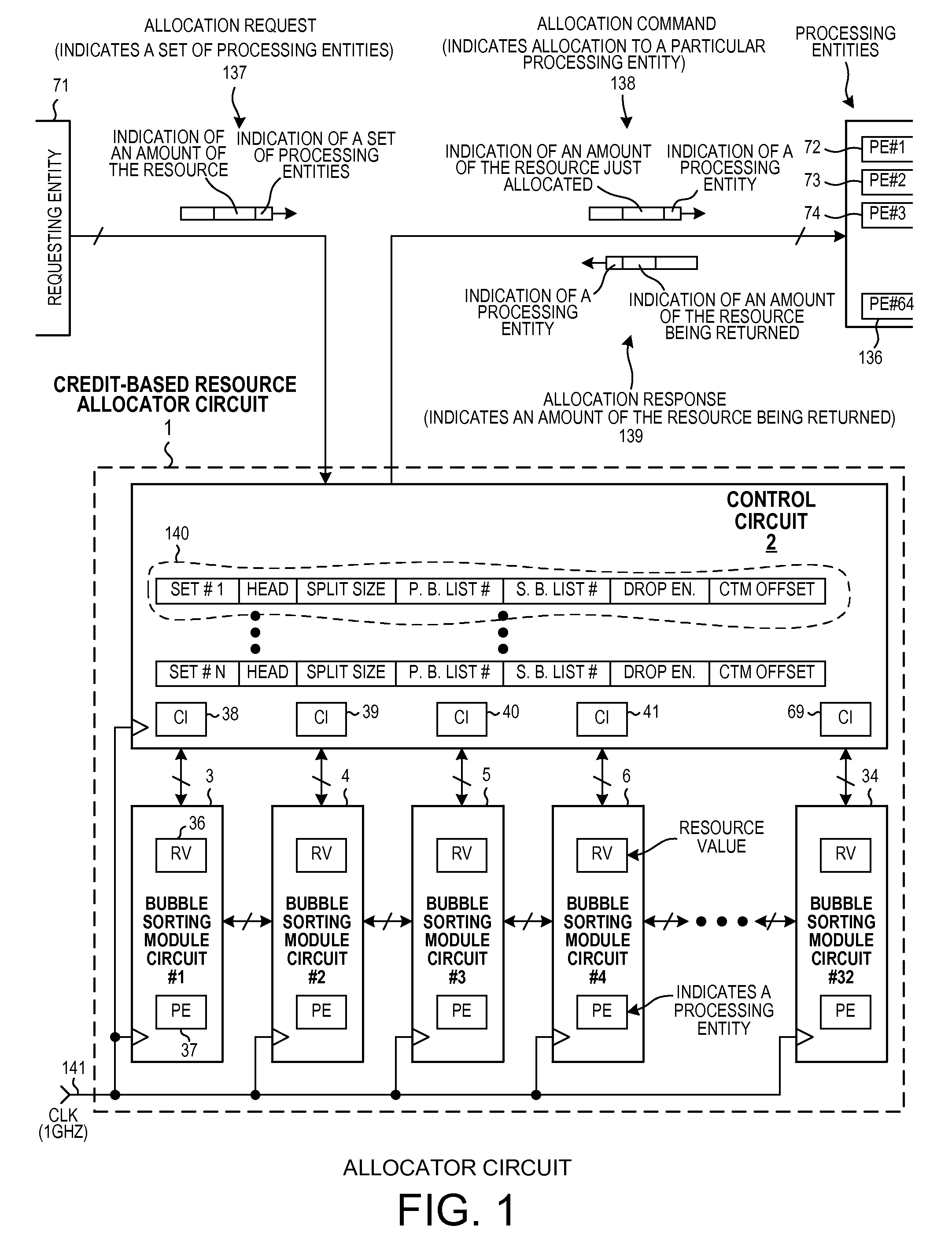Credit-based resource allocator circuit
a resource allocator and resource technology, applied in the field of high-speed credit-based resource allocator circuits, can solve problems such as overburdening of processing entities
- Summary
- Abstract
- Description
- Claims
- Application Information
AI Technical Summary
Benefits of technology
Problems solved by technology
Method used
Image
Examples
Embodiment Construction
[0023]Reference will now be made in detail to some embodiments of the invention, examples of which are illustrated in the accompanying drawings.
[0024]FIG. 1 is a diagram of a resource allocator circuit 1 in accordance with one novel aspect. Resource allocator circuit 1 includes a control circuit 2 and thirty-two bubble sorting module circuits 3-34. The bubble sorting module circuits are all identical to one another. The bubble sorting module circuits are logically organized in a row as shown. The bubble sorting module circuits do not include any general purpose processor that fetches instructions from a memory and that decodes and executes instructions, nor do the bubble sorting module circuits access a memory or maintain any linked lists. Rather, the bubble sorting module circuits are realized entirely in the form of high-speed combinatorial logic and dedicated state machines.
[0025]In addition to the allocator circuit 1, there is also a requesting entity 71 and a plurality of assoc...
PUM
 Login to View More
Login to View More Abstract
Description
Claims
Application Information
 Login to View More
Login to View More - R&D
- Intellectual Property
- Life Sciences
- Materials
- Tech Scout
- Unparalleled Data Quality
- Higher Quality Content
- 60% Fewer Hallucinations
Browse by: Latest US Patents, China's latest patents, Technical Efficacy Thesaurus, Application Domain, Technology Topic, Popular Technical Reports.
© 2025 PatSnap. All rights reserved.Legal|Privacy policy|Modern Slavery Act Transparency Statement|Sitemap|About US| Contact US: help@patsnap.com



